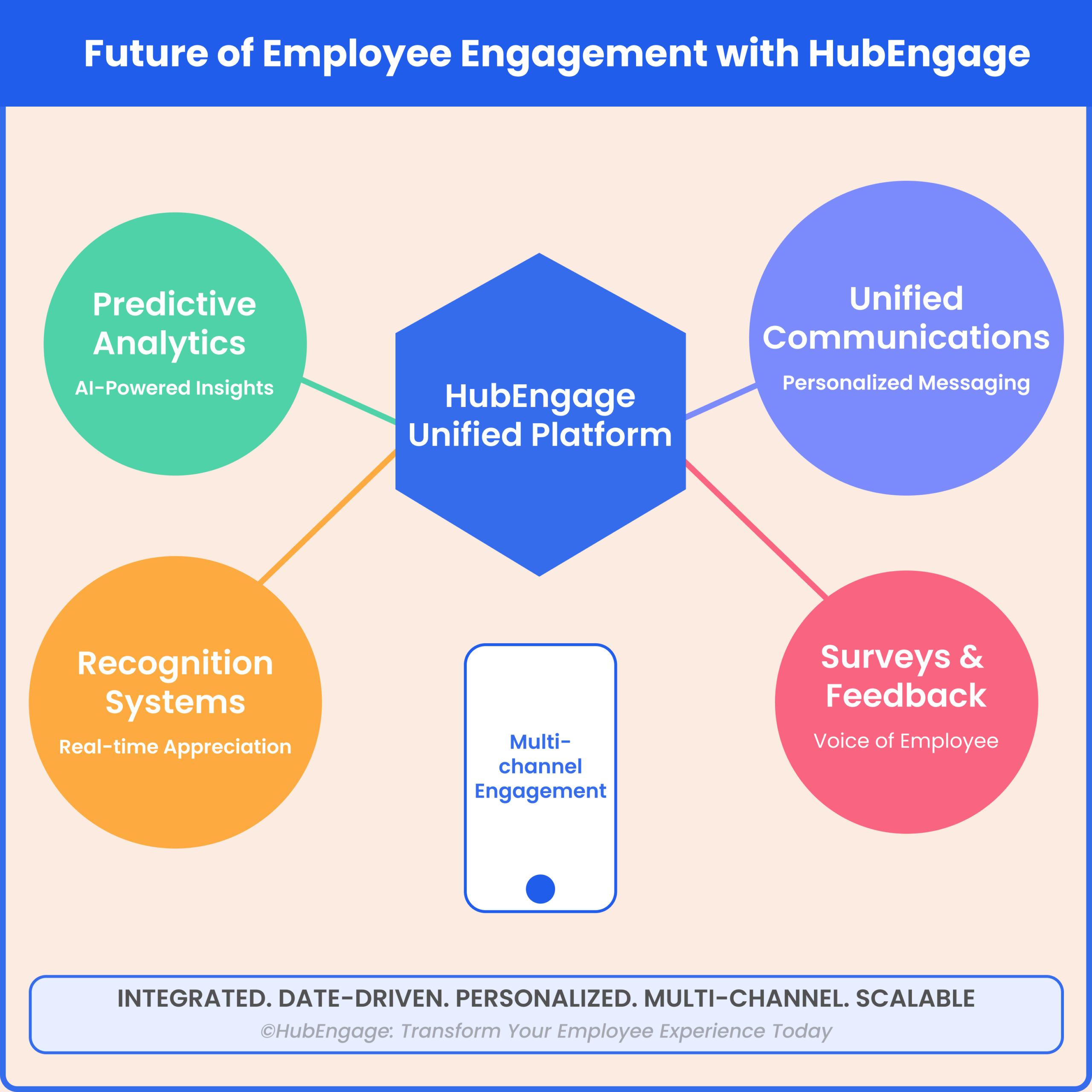Employee engagement in HR has become the cornerstone of successful organizations in today’s rapidly evolving business landscape. Moreover, companies that prioritize employee engagement in HR consistently outperform their competitors across multiple metrics. Consequently, HR departments now recognize engagement as their primary strategic focus rather than a secondary concern. Furthermore, research demonstrates that organizations with highly engaged workforces experience 21% greater profitability according to Gallup’s extensive studies. Additionally, the connection between employee engagement in HR practices and business outcomes has never been clearer. Therefore, forward-thinking companies are reimagining their approach to workforce management through innovative HR engagement strategies.
In fact, the transformation happening across industries stems directly from how HR teams approach engagement initiatives. Nevertheless, many organizations still struggle to implement effective HR engagement programs despite understanding their importance. However, solutions like HubEngage are changing this paradigm through specialized tools designed specifically for HR professionals. Meanwhile, the workforce continues to evolve with new expectations about their relationship with employers and HR departments. Subsequently, companies that adapt their HR practices quickly gain significant competitive advantages in recruitment and retention.
Key Takeaways
- Engaged employees stay longer, perform better, and drive success through effective HR practices.
- HR fuels engagement through recognition, communication, and growth opportunities.
- Smart HR technology makes employee engagement effortless and impactful.
- A strong workplace culture developed by HR turns employees into brand advocates.
- Continuous HR feedback systems keep motivation and commitment high.
What is Employee Engagement?
Employee engagement is the emotional commitment an employee has toward their organization and its goals. It goes beyond job satisfaction—engaged employees are motivated to contribute their best efforts, take initiative, and feel a strong connection to their workplace. When employees are engaged, they are more productive, collaborate better with their teams, and help drive the company’s success.
What is Employee Engagement in HR?
Employee engagement in HR refers to how committed and motivated employees feel toward their work and the organization. It’s not just about job satisfaction; it’s about employees feeling valued, connected, and passionate about their roles. HR teams play a key role in fostering engagement by creating a positive work environment, recognizing efforts, and encouraging open communication. When employees are engaged, they are more productive, stay longer with the company, and contribute to a strong workplace culture.
The Evolution of Employee Engagement in HR
Earlier Perspective in HR:
Employee engagement in HR was once seen as simple job satisfaction.
HR measured it through annual surveys with limited insight.
Over time, HR research showed engagement is more than just satisfaction.
Shifting Focus in HR:
Initially, HR teams relied on compensation to drive engagement.
Later, HR studies found that intrinsic motivators matter more than financial rewards.
Now, HR professionals recognize engagement comes from multiple factors within the organization.
Impact of Technology on HR:
Advancements in HR tech have made it easier to measure and improve employee engagement.
Companies with comprehensive HR engagement strategies see 59% less turnover (SHRM research).
Changing HR Approaches:
Earlier, engagement programs were led by senior leadership with little employee input to HR.
Today, the best HR programs involve feedback from all levels of the organization.
This shift aligns with modern HR workplace values of transparency and inclusion.
The Outcome of HR Engagement:
Companies that adapt their HR engagement approaches build stronger, more innovative cultures.
Key Components of Effective Employee Engagement Strategies
Successful employee engagement in HR strategies incorporate several essential elements working in harmony. Firstly, clear communication channels between HR, management and staff form the foundation of any effective program. Secondly, opportunities for professional development demonstrate HR’s investment in employee growth. Thirdly, recognition systems that acknowledge contributions reinforce positive behaviors throughout the company’s HR initiatives.
Regular HR feedback mechanisms provide critical insights for continuous improvement. Similarly, HR wellness initiatives addressing both physical and mental health contribute significantly to engagement levels.
Additionally, alignment between individual goals and organizational objectives creates meaningful work experiences through HR planning. Furthermore, inclusive HR practices ensuring all employees feel valued regardless of background or position enhance overall engagement.
Technology platforms like HubEngage integrate these components into comprehensive solutions for HR teams. Consequently, implementation becomes more streamlined and measurable for HR departments.
Research from Deloitte indicates organizations using dedicated HR engagement platforms achieve 37% higher retention rates than those relying on disconnected tools. In contrast, companies using fragmented HR approaches often struggle with inconsistent results and measurement challenges.
Measuring the Impact of Engagement Initiatives
Quantifying HR engagement results requires sophisticated metrics beyond traditional satisfaction surveys. Specifically, key HR performance indicators should include retention rates, productivity measures, and absenteeism statistics. Likewise, customer satisfaction often correlates strongly with employee engagement levels fostered by HR. Furthermore, financial performance indicators frequently reflect the impact of HR engagement initiatives across departments.
Modern HR analysis techniques allow teams to identify specific engagement drivers within their organizations. Hence, HR resources can be allocated more effectively to address priority areas. Moreover, longitudinal studies tracking HR engagement trends over time provide valuable strategic insights. Still, many organizations struggle to implement comprehensive HR measurement systems without specialized tools.
HubEngage’s analytics capabilities transform raw data into actionable intelligence for HR decision-makers. For instance, customized HR dashboards visualize engagement patterns across different departments and demographics. Indeed, this granular visibility enables precisely targeted HR interventions rather than one-size-fits-all approaches. A study by McKinsey found organizations using advanced analytics for HR engagement initiatives reported 25% higher success rates in achieving their program objectives.
The Role of Technology in Modern Employee Engagement in HR
Digital transformation has revolutionized HR engagement practices across industries. Currently, mobile applications enable continuous HR feedback rather than annual or quarterly assessments. Simultaneously, artificial intelligence helps HR identify patterns human analysts might miss. Afterward, automated HR systems can deliver personalized engagement experiences scaled across large organizations.
Cloud-based HR platforms provide accessibility regardless of employee location or schedule. Accordingly, remote and hybrid workforces maintain connection to company culture despite physical distance through innovative HR tools. Yet, technology alone cannot drive engagement without thoughtful HR implementation aligned with organizational values.
HubEngage’s platform incorporates multiple technologies specifically designed for contemporary HR workforces. For example, its mobile-first approach recognizes that 85% of employees prefer using smartphones for workplace HR communications. WebFX research confirms that HR engagement platforms with mobile capabilities achieve 47% higher participation rates than desktop-only solutions.
Communication Strategies That Drive Employee Engagement in HR
Effective communication forms the core of successful engagement initiatives. Particularly, multi-directional channels enabling authentic dialogue rather than top-down announcements show significant impact. Namely, regular townhalls, feedback sessions, and digital forums create opportunities for meaningful exchange. Thus, employees feel heard and valued beyond their basic job functions.
Transparency regarding organizational decisions builds trust throughout the company. Actually, sharing both successes and challenges demonstrates respect for employees’ intelligence and commitment. As a result, stronger connections develop between individual roles and broader company objectives.
HubEngage provides integrated HR communication tools designed specifically for engagement purposes. In particular, its targeted messaging capabilities ensure relevant HR information reaches appropriate audiences without overwhelming employees with irrelevant content. According to Harvard Business Review, organizations implementing structured HR communication programs through dedicated platforms report 28% higher engagement scores compared to those using general communication tools.
Recognition and Reward Systems in HR
Acknowledging employee contributions significantly influences HR engagement levels across all demographics. Specifically, HR recognition programs should combine formal awards with spontaneous appreciation. Equally important, both monetary and non-monetary rewards play valuable roles in comprehensive HR systems.
Peer-to-peer recognition platforms democratize appreciation throughout organizational structures. Consequently, positive behaviors receive reinforcement from multiple sources rather than depending solely on management attention. Nevertheless, programs must align with authentic company values to avoid appearing manipulative or insincere.
HubEngage’s recognition modules enable customized approaches matching specific organizational cultures. Especially relevant, its analytics track recognition patterns to ensure equitable distribution across departments and teams. A Gartner analysis determined that companies using integrated recognition platforms experienced 31% higher retention among high-performing employees compared to organizations with standalone programs.
Professional Development and Growth Opportunities in HR
Career advancement opportunities consistently rank among top HR engagement drivers across industries. In essence, employees who see clear development paths through HR demonstrate stronger organizational commitment. Similarly, HR skill enhancement programs signal company investment in long-term relationships rather than transactional employment.
Mentorship initiatives connecting experienced staff with emerging talent benefit both participants. Meanwhile, cross-training opportunities expand employee capabilities while improving operational flexibility. Altogether, comprehensive development programs create more resilient organizations while satisfying individual growth aspirations.
HubEngage facilitates development programming through specialized learning and tracking tools. Notably, its platform connects training opportunities with engagement metrics to measure educational investment impacts. LinkedIn’s Workplace Learning Report found that employees at companies using integrated learning and engagement platforms were 83% more likely to feel valued by their organizations.
Wellness and Work-Life Balance in HR
Employee wellbeing directly influences HR engagement levels across all demographics. Initially, physical health programs formed the foundation of HR wellness initiatives. Since then, mental health support has gained equal importance in comprehensive HR approaches. Now, successful HR programs address holistic wellbeing including financial stability and social connection.
Flexible work arrangements demonstrate HR’s trust while accommodating diverse life circumstances. Therefore, organizations offering customizable schedules through HR typically report higher engagement scores. Yet, boundaries between professional and personal life require thoughtful HR management to prevent burnout despite flexible arrangements.
HubEngage incorporates wellness programming into its comprehensive HR engagement platform. Particularly useful, its tracking capabilities help HR organizations identify stressors affecting specific teams or departments. The American Psychological Association reports that companies implementing integrated HR wellness and engagement programs experience 23% lower healthcare costs and 31% fewer disability claims.
Diversity, Equity, and Inclusion Impact on Engagement in HR
Inclusive HR workplaces consistently demonstrate higher engagement levels across all demographics. Indeed, environments where diverse perspectives receive genuine consideration foster innovation and problem-solving. Moreover, equitable practices ensure all employees access opportunities based on merit rather than background characteristics.
Belonging represents the emotional component complementing structural diversity and equity initiatives in HR. Specifically, when employees feel accepted authentically rather than despite their differences, HR engagement naturally increases. Still, creating truly inclusive HR cultures requires ongoing commitment rather than one-time initiatives.
HubEngage provides specialized tools for measuring inclusion perceptions across different employee groups. Consequently, organizations identify specific areas needing attention rather than implementing generic programs. Research from McKinsey confirms that companies in the top quartile for diversity experience 36% higher profitability when this diversity is supported by strong inclusion practices.
Leadership’s Role in Driving Engagement in HR
Executive support fundamentally determines HR engagement initiative success or failure. Particularly, visible leadership participation demonstrates organizational commitment to HR beyond policy statements. Therefore, leaders modeling engaged behaviors create cascading effects throughout company HR structures.
Middle managers significantly influence daily HR engagement experiences for most employees. Hence, providing these leaders with appropriate HR resources and training magnifies program effectiveness. Still, managers require HR systems supporting consistent implementation across different departments and teams.
HubEngage offers specialized resources for leadership development focused specifically on engagement capabilities. Notably, its tracking systems help identify managers achieving exceptional engagement results who can mentor others. Gallup research indicates that manager effectiveness accounts for at least 70% of variance in team engagement scores across organizations.
Employee Engagement in HR for Remote and Hybrid Workforces
Distributed work arrangements present unique engagement challenges requiring specialized approaches. Specifically, maintaining connection to organizational culture despite physical distance demands intentional strategies. Nevertheless, remote work offers engagement advantages through flexibility and autonomy when properly structured.
Digital communication tools facilitate collaboration but cannot entirely replace interpersonal connection. Therefore, successful organizations balance technology utilization with periodic in-person gatherings when possible. Yet, engagement programs must avoid creating disadvantages for remote workers compared to on-site colleagues.
HubEngage’s platform specifically addresses remote workforce engagement through targeted features. For instance, its virtual recognition tools ensure distributed employees receive equal appreciation visibility. Stanford research found that organizations using specialized engagement platforms for remote workers experienced 47% higher retention rates among distributed team members.
ROI of Employee Engagement in HR Initiatives
Financial returns from engagement investments manifest through multiple channels. Primarily, reduced turnover generates substantial savings in recruitment and training costs. Additionally, engaged workforces demonstrate higher productivity across all departments. Furthermore, innovation increases naturally when employees feel emotionally invested in organizational success.
Customer experience metrics frequently reflect internal engagement levels through service quality. Indeed, research consistently shows direct correlations between employee engagement and customer satisfaction. Moreover, operational efficiency improves as engaged employees identify and implement process enhancements.
HubEngage’s analytic capabilities help organizations quantify specific returns from engagement investments. Notably, its benchmarking features compare results against industry standards to identify additional improvement opportunities. According to Deloitte research, organizations using comprehensive engagement platforms average 3.9x return on investment within the first 24 months of implementation.
Future Trends in Employee Engagement in HR
Emerging employee engagement trends are transforming workplaces with new technology and smart data tools. These advancements help companies detect engagement issues early and create personalized experiences that fit each employee’s work style, leading to greater satisfaction and innovation.
Different age groups have different expectations about work. Smart companies create flexible programs that work for everyone while still being consistent. Even with all these changes, people still want the same basic things: meaning in their work, connections with others, and chances to grow.
HubEngage keeps updating its platform based on new research and technology. They’re adding artificial intelligence features that make experiences more personal while keeping information private. Gartner says that by 2026, companies using AI-powered engagement tools will keep 41% more employees than those using older systems.
“Quick engagement moments” are becoming more popular than longer engagement activities. Companies that give employees short, meaningful interactions throughout the day build stronger connections than those relying on rare big events. Brain research shows these frequent small moments make people feel rewarded more effectively than occasional big initiatives.
Work-life balance tools give employees personalized suggestions to help them manage their time better between work and personal life.
“Voice-first” engagement interfaces will transform how employees interact with organizational resources and feedback mechanisms. Furthermore, conversational AI specifically trained on organizational contexts will facilitate more natural engagement experiences.
Decision-helper systems will guide managers to make better choices about engaging employees through real-time advice and data analysis. This helps even new managers use proven methods that fit their specific team.
Companies that use forward-looking platforms today will be in a better position for the future of work. Skill marketplaces will replace traditional career ladders, letting employees advance based on their abilities rather than time served. This makes employees more engaged because they see clear paths to grow based on their skills instead of just waiting for promotions.
Implementing HubEngage for a Comprehensive Employee Engagement in HR Strategy
Implementing an integrated engagement platform like HubEngage requires careful planning to ensure alignment with organizational culture and objectives. Initially, organizations should assess existing programs to identify strengths and gaps. Customization is essential to tailor the platform to specific needs, and a phased implementation approach can help maintain employee enthusiasm without causing overwhelm.
HubEngage provides specialized onboarding support, incorporating best practices from similar organizations. This guidance can significantly reduce implementation timelines and improve adoption rates. However, it’s crucial to balance standardized approaches with customizations that address unique organizational characteristics.
Case studies across various industries demonstrate impressive results with HubEngage solutions. For instance, The Catered Affair experienced enhanced employee engagement and communication after implementation. Similarly, Bouclair leveraged HubEngage to achieve transformative outcomes. These examples highlight the platform’s adaptability and effectiveness in diverse settings.
According to SHRM data, companies using integrated engagement platforms achieve full implementation 62% faster than those attempting to connect separate systems. This efficiency underscores the value of adopting a comprehensive solution like HubEngage for employee engagement initiatives.
Experience the impact firsthand – take a free demo of HubEngage today and see how it can transform your employee engagement strategy!
Summing Up
Employee engagement in HR is no longer just an optional strategy – it is a necessity for building a thriving workplace. As businesses continue to evolve, fostering a culture where employees feel valued, heard, and motivated leads to long-term success. By prioritizing clear communication, recognition, professional growth, and well-being, organizations can create a positive environment where both employees and businesses grow together. The future of work belongs to companies that invest in their people, ensuring engagement remains at the heart of their HR strategies.















